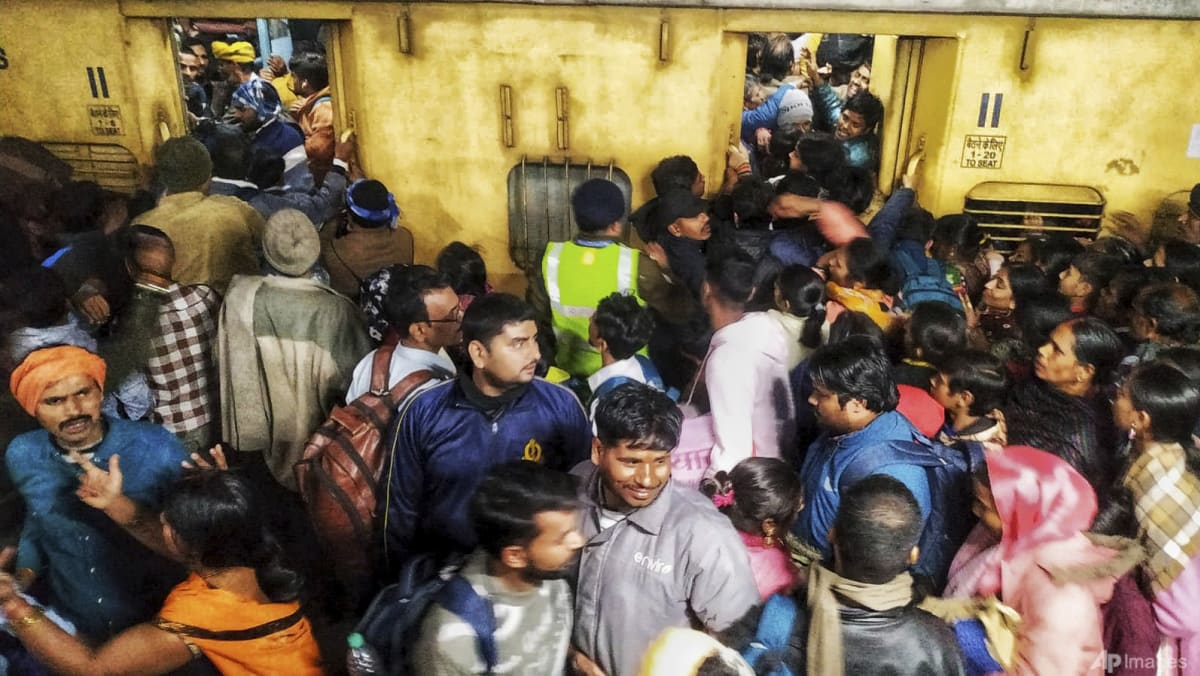Asia
15 dead in India stampede to catch trains to Hindu mega-festival

A TragicStampede at New Delhi Railway Station: A Devastating Blow to Kumbh Mela Pilgrims
In the early hours of Saturday, February 15, a heartbreaking tragedy unfolded at a railway station in New Delhi, India, as a massive crowd surged forward to board trains heading to the Kumbh Mela, the world’s largest religious gathering. The stampede resulted in the deaths of at least 15 people, with an additional 11 injured, according to Dr. Ritu Saxena, the deputy medical superintendent of Lok Nayak Hospital. The victims,many of whom were pilgrims eager to reach the sacred event, succumbed to hypoxia or blunt injuries caused by the crush of the crowd. The incident is a stark reminder of the risks associated with managing massive gatherings, particularly at one of Hinduism’s most revered events.
The Kumbh Mela: A Celebration of Faith, Marred by Tragedy
The Kumbh Mela, held every 12 years in the northern city of Prayagraj, is a spiritual spectacle that attracts tens of millions of Hindu devotees. This year’s event began last month, and officials estimate that over 500 million pilgrims have already attended. The festival’s sheer scale and significance are unparalleled, as it represents a sacred convergence of the Ganges, Yamuna, and mythical Saraswati rivers. However, the event’s history is not without its share of disasters. Just last month, at least 30 people lost their lives in another stampede at the holy confluence, and the 1954 Kumbh Mela remains one of the deadliest crowd-related disasters in history, claiming over 400 lives in a single day. The recent tragedy in New Delhi adds to the growing list of heartbreaking incidents that have marred this otherwise joyous celebration of faith.
The Human Cost of the Stampede: Grief and sarecovery Efforts
The stampede at the New Delhi railway station has left families devastated, with many mourning the loss of loved ones who were eager to participate in the Kumbh Mela. Prime Minister Narendra Modi expressed his distress over the incident, offering condolences to the families of the deceased and praying for the speedy recovery of the injured. “My thoughts are with all those who have lost their loved ones. I pray that the injured have a speedy recovery,” he wrote in a social media post. Delhi’s Governor, Vinai Kumar Saxena, also responded swiftly, directing disaster management personnel to deploy and ensuring that all hospitals were prepared to handle the emergency. Railway Minister Ashwini Vaishnaw announced the addition of special trains to alleviate the overcrowding, but the damage had already been done. For the families affected, the loss is irreparable, and the tragedy serves as a poignant reminder of the risks that come with such immense gatherings.
The Significance of the Kumbh Mela: A Celebration of Faith and Renewal
The Kumbh Mela is more than just a religious event; it is a cultural phenomenon that holds immense spiritual and historical significance for Hindus worldwide. The six-week-long festival is a time of renewal, reflection, and pilgrimage, where millions of devotees gather to bathe in the sacred rivers, seeking purification and enlightenment. The event is also a celebration of India’s rich cultural heritage, with its vibrant Processions, prayer ceremonies, and the presence of revered saints and spiritual leaders. Despite its grandeur, however, the festival has always been fraught with logistical challenges. Managing such vast crowds requires meticulous planning, and the recent tragedy highlights the urgent need for improved safety measures to ensure that the spirit of the Kumbh Mela is not overshadowed by unnecessary loss of life.
Lessons from the Past: Preventing Future Tragedies at the Kumbh Mela
While the Kumbh Mela has always been a source of inspiration and faith, its history is littered with instances of crowd-related disasters. In 1954, over 400 people lost their lives on a single day, making it one of the deadliest stampedes in recorded history. More recently, in 2013, 36 pilgrims were crushed to death during the festival in Prayagraj. Each of these incidents has led to calls for better crowd management, improved infrastructure, and more robust safety protocols. The latest tragedy in New Delhi underscores the need for a comprehensive approach to handling the massive influx of pilgrims during such events. authorities must work tirelessly to ensure that the lessons of the past are not forgotten and that future pilgrims can participate in the Kumbh











